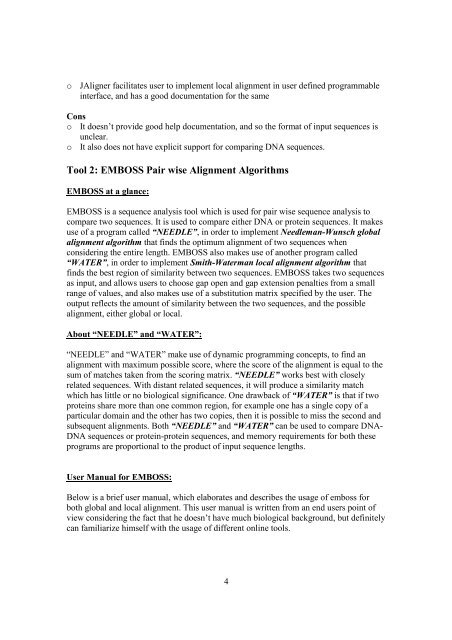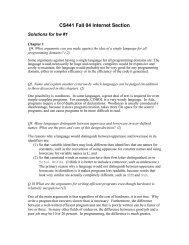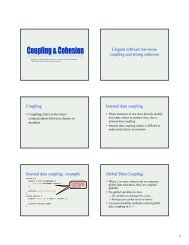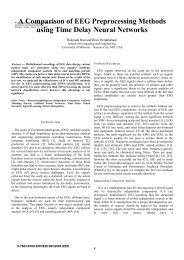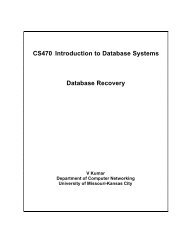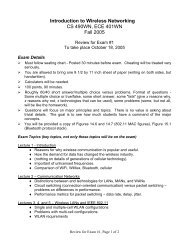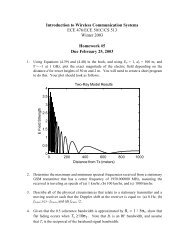Optimal Pairwise Alignment Tools - University of Missouri - Kansas ...
Optimal Pairwise Alignment Tools - University of Missouri - Kansas ...
Optimal Pairwise Alignment Tools - University of Missouri - Kansas ...
Create successful ePaper yourself
Turn your PDF publications into a flip-book with our unique Google optimized e-Paper software.
o<br />
JAligner facilitates user to implement local alignment in user defined programmable<br />
interface, and has a good documentation for the same<br />
Cons<br />
o It doesn’t provide good help documentation, and so the format <strong>of</strong> input sequences is<br />
unclear.<br />
o It also does not have explicit support for comparing DNA sequences.<br />
Tool 2: EMBOSS Pair wise <strong>Alignment</strong> Algorithms<br />
EMBOSS at a glance:<br />
EMBOSS is a sequence analysis tool which is used for pair wise sequence analysis to<br />
compare two sequences. It is used to compare either DNA or protein sequences. It makes<br />
use <strong>of</strong> a program called “NEEDLE”, in order to implement Needleman-Wunsch global<br />
alignment algorithm that finds the optimum alignment <strong>of</strong> two sequences when<br />
considering the entire length. EMBOSS also makes use <strong>of</strong> another program called<br />
“WATER”, in order to implement Smith-Waterman local alignment algorithm that<br />
finds the best region <strong>of</strong> similarity between two sequences. EMBOSS takes two sequences<br />
as input, and allows users to choose gap open and gap extension penalties from a small<br />
range <strong>of</strong> values, and also makes use <strong>of</strong> a substitution matrix specified by the user. The<br />
output reflects the amount <strong>of</strong> similarity between the two sequences, and the possible<br />
alignment, either global or local.<br />
About “NEEDLE” and “WATER”:<br />
“NEEDLE” and “WATER” make use <strong>of</strong> dynamic programming concepts, to find an<br />
alignment with maximum possible score, where the score <strong>of</strong> the alignment is equal to the<br />
sum <strong>of</strong> matches taken from the scoring matrix. “NEEDLE” works best with closely<br />
related sequences. With distant related sequences, it will produce a similarity match<br />
which has little or no biological significance. One drawback <strong>of</strong> “WATER” is that if two<br />
proteins share more than one common region, for example one has a single copy <strong>of</strong> a<br />
particular domain and the other has two copies, then it is possible to miss the second and<br />
subsequent alignments. Both “NEEDLE” and “WATER” can be used to compare DNA-<br />
DNA sequences or protein-protein sequences, and memory requirements for both these<br />
programs are proportional to the product <strong>of</strong> input sequence lengths.<br />
User Manual for EMBOSS:<br />
Below is a brief user manual, which elaborates and describes the usage <strong>of</strong> emboss for<br />
both global and local alignment. This user manual is written from an end users point <strong>of</strong><br />
view considering the fact that he doesn’t have much biological background, but definitely<br />
can familiarize himself with the usage <strong>of</strong> different online tools.<br />
4


